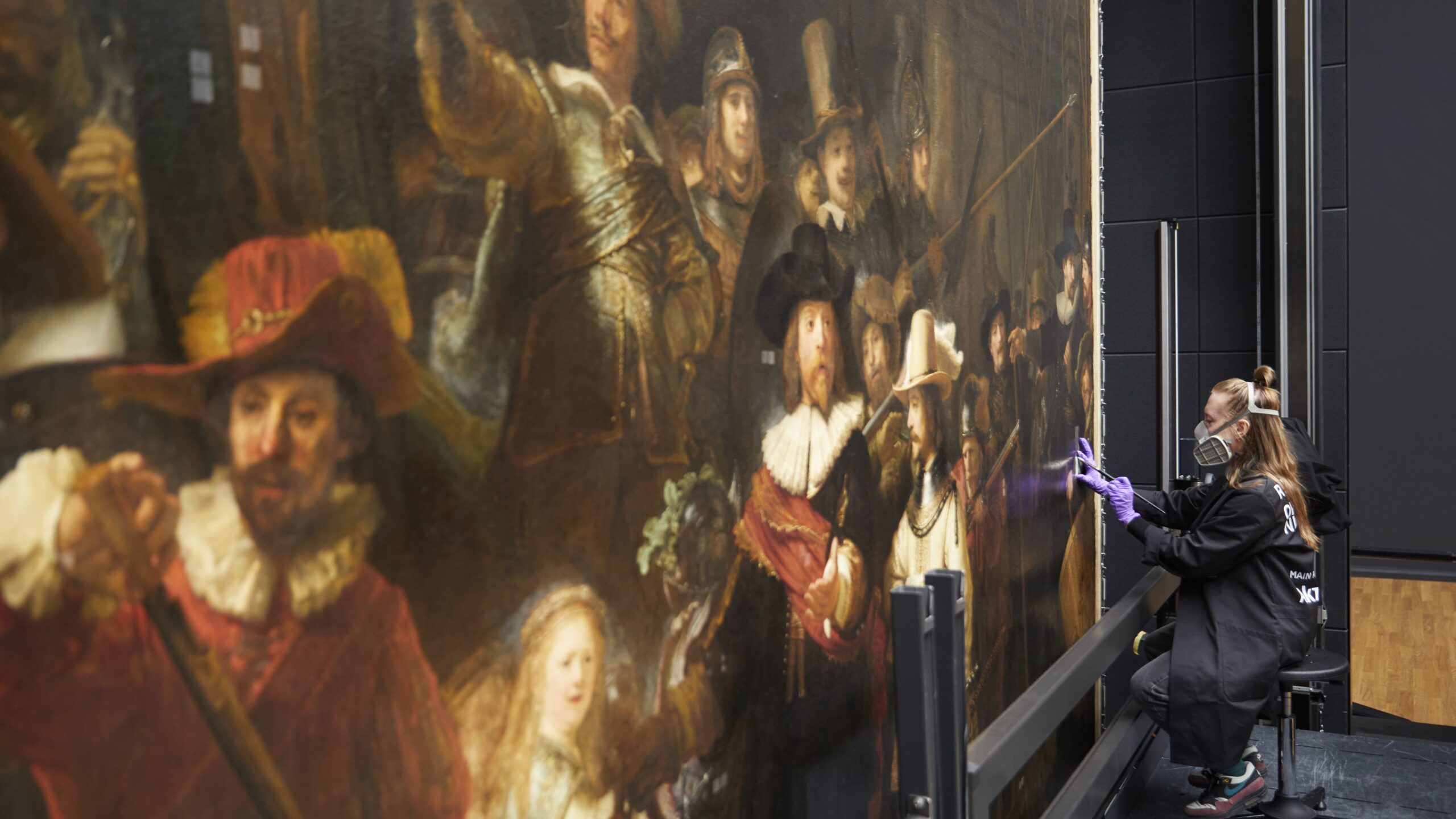Science
New Research Reveals Dog in Rembrandt’s ‘The Night Watch’ Inspired by Historical Illustration

Research has unveiled that the dog featured in Rembrandt van Rijn’s iconic painting, The Night Watch, was likely inspired by a widely available book illustration. The findings suggest that this canine, which appears as the citizens of Amsterdam prepare to defend their city, draws its likeness from the title page of an illustrated work on moral themes by Dutch artist and poet Adriaen van de Venne.
The investigation coincides with the ongoing public restoration of The Night Watch at the Rijksmuseum in Amsterdam. Anne Lenders, the museum’s curator of 17th-century Dutch paintings, made this connection during a visit to an exhibition highlighting Van de Venne’s work at the Zeeuws Museum in Middelburg last year. “As soon as I saw that dog, ‘The Night Watch’ dog came into my mind — I recognized it by the turn of the head,” Lenders stated.
Using advanced techniques such as macro X-ray fluorescence scans, researchers explored a chalk underdrawing of The Night Watch, revealing further similarities between the two dogs. In Rembrandt’s final version, the dog is depicted standing on all fours with its tongue out, barking at a large drum. “It’s very clever how Rembrandt adjusted his dog, putting it in an active stance, vigilant and alert,” Lenders explained. “At any moment, his dog could run away, and this strengthens the living quality of the painting.”
Rembrandt’s engagement with Van de Venne’s prints is well documented. Lenders noted that a figure from the same illustration also shares characteristics with a person in Rembrandt’s subsequent work, Joseph Accused by Potiphar’s Wife, created in 1655 and held at the Gemäldegalerie in Berlin.
In discussing the significance of artistic copying, Taco Dibbits, director of the Rijksmuseum, emphasized that this practice was integral to an artist’s education and a sign of intellectual prowess. “He didn’t want people to call him Rembrandt van Rijn, but just Rembrandt, like Michelangelo,” Dibbits remarked. “He aimed to be that learned artist who based his work on the prints of his predecessors, mastering them so thoroughly that he could innovate further.”
The study highlights the deep connections between artists of the past and their sources of inspiration, shedding light on how historical context influences artistic expression. As the restoration of The Night Watch continues, this research adds a new layer of understanding to a masterpiece that remains central to the narrative of Dutch Golden Age art.
-

 Lifestyle4 months ago
Lifestyle4 months agoLibraries Challenge Rising E-Book Costs Amid Growing Demand
-

 Sports3 months ago
Sports3 months agoTyreek Hill Responds to Tua Tagovailoa’s Comments on Team Dynamics
-

 Sports3 months ago
Sports3 months agoLiverpool Secures Agreement to Sign Young Striker Will Wright
-

 Lifestyle3 months ago
Lifestyle3 months agoSave Your Split Tomatoes: Expert Tips for Gardeners
-

 Lifestyle3 months ago
Lifestyle3 months agoPrincess Beatrice’s Daughter Athena Joins Siblings at London Parade
-

 World3 months ago
World3 months agoWinter Storms Lash New South Wales with Snow, Flood Risks
-

 Science4 months ago
Science4 months agoTrump Administration Moves to Repeal Key Climate Regulation
-

 Science3 months ago
Science3 months agoSan Francisco Hosts Unique Contest to Identify “Performative Males”
-

 Business4 months ago
Business4 months agoSoFi Technologies Shares Slip 2% Following Insider Stock Sale
-

 Science4 months ago
Science4 months agoNew Tool Reveals Link Between Horse Coat Condition and Parasites
-

 Sports4 months ago
Sports4 months agoElon Musk Sculpture Travels From Utah to Yosemite National Park
-

 Science4 months ago
Science4 months agoNew Study Confirms Humans Transported Stonehenge Bluestones









